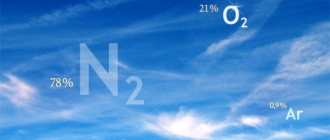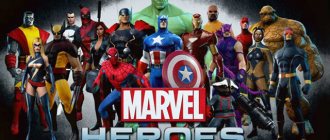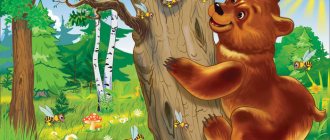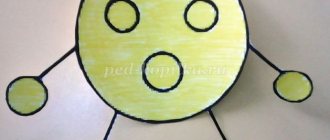Abstract of GCD on FEMP on the topic: “Properties of objects”
Author: Apreleva Marina Gennadievna
Teacher of MBDOU CRR kindergarten No. 142 “Rosinka”, Ulyanovsk
Abstract of GCD on FEMP on the topic: “Properties of objects”
Municipal budgetary preschool educational institution "Kindergarten No. 142 "Rosinka"
Abstract of GCD on FEMP on the topic: “Properties of objects.”
Prepared by:
teacher
Apreleva M.G.
2020
Target:
To consolidate children's understanding of the properties of objects, the ability to find signs of their similarities and differences, to combine objects in a group according to a common characteristic (color, shape, size, material, purpose, etc.).
Tasks:
- Repeat and consolidate ideas about the shapes of geometric figures - square, circle, triangle, rectangle, oval.
- Develop attentiveness, creative imagination, ingenuity, the ability to substantiate your point of view, and draw conclusions.
- Develop the ability to work independently, develop self-control skills, and cultivate a friendly attitude towards each other.
Techniques used to guide children's activities:
Motivation
: surprise moment, commenting.
Activation of children's activities:
conversation, creating a developmental environment, posing a problematic question, solving a mathematical riddle.
Organization of practical activities:
showing illustrations, commenting, using the game “Geometric Shapes”, a mathematical riddle.
Motivation and maintaining interest:
surprise moment, situation of choice, physical activity, change of activities.
Assessment of children's activities, activation of self-esteem:
encouragement
Subject development environment for OOD:
models of geometric shapes: small and large red circles, small and large blue squares, large blue rhombus, large blue rectangle, large red oval, two small green triangles, large green equilateral triangle, large green equilateral triangle, large green isosceles triangle, rope with tied ends, an envelope with a “letter” from the Kingdom of Geometric Shapes, decorated with stickers of geometric shapes, a magnetic board.
Handout:
sheets of white paper, simple pencils, rulers with a stencil (geometric shapes)
Activities of children in OOD:
cognitive, gaming, communicative, motor.
Educational areas:
cognition (FEMP), physical development, communication, speech development.
OOD Plan
1.Introductory part – 2 min. Psychological mood. Surprise moment.
- Main part – 20 min. A conversation about the shapes of geometric figures. Didactic game "Geometric shapes". Dynamic pause "Wizards". Game "Characteristics and similarities of geometric shapes." Physical school
- Final part - 3 min. Physical education minute. Summing up the OOD. Assessment of children's activities.
Duration of OOD
– 25 min.
Progress of OOD
- Introductory part.
Psychological mood.
All the children gathered in a circle,
I am your friend and you are my friend
Let's hold hands tightly
And let's smile at each other.
IN:
I will smile at you, and you will smile at each other, so that you and I will have a good mood all day.
(pay attention to the envelope with the “letter” from the Kingdom of Geometric Figures)
IN:
Guys, look, we have received a letter. Let's read it.
“Dear guys! Marina Gennadievna, told me how well you know geometric shapes. That's why I decided to send you a game as a gift. I think you will definitely like it!
And of course, I invite you to visit me in the Kingdom of Geometric Shapes. See you soon!
Queen Mathematics"
IN:
Look at the blackboard. What do you see?
D:
geometric figures.
IN:
Let's remember the names of these geometric shapes.
Children name geometric shapes.
IN:
What do you know about this geometric figure?
(The teacher shows geometric shapes: square, triangle, circle, oval, rectangle
)
What is it called? How many angles does it have? How many sides? What shape does it have?
Children must name the color, size, shape.
- It's a little red circle.
- This is a small blue square.
- This is a small green triangle, etc.
- Main part.
Didactic game "Geometric shapes".
Let's look at our figures too
(pictures change on the board)
IN:
Please describe the changes that have occurred to the figures.
D:
the small red circle turned into a big red circle at first. The size has changed, but the shape and color have not changed.
And then the small red circle turned into a large red oval, the size and shape changed, but the color did not change.
D:
blue square. At first the size changed, the shape and color did not change.
Then the size and shape changed, but the color, number of corners and number of sides did not change.
Then the size and color changed, but the shape did not change.
D:
The same changes have occurred with the small green triangle. First the size changed, but the shape and color did not change.
Then the size and shape changed, but the color did not change. Then the size, shape and color changed, it turned into a large red square.
Dynamic pause "Wizards".
IN:
Have you seen what transformations took place with a circle, a square and a triangle. Now let’s play a little and build geometric shapes ourselves. For this we need this rope. I will show you a geometric figure, and you will all try to make it together.
(children stand in the center of the room, receive a rope with tied ends, take it with both hands and, at the teacher’s signal, form various geometric shapes. At the same time, the features of geometric shapes are repeated: an oval and a circle have no corners; a triangle has three angles and three sides, and a square and rectangle have four angles and four sides; A square has all sides equal, but a rectangle has only opposite sides.
).
Consolidating representations of the properties of objects.
Game "Characteristics and similarities of geometric shapes."
IN:
I have three envelopes with geometric shapes in my hands. You can identify the similarities and differences between these figures.
Sample answers from children:
D:
1) in the first envelope there are two blue figures. Both figures are blue, but one of them is a square, and the second is a circle. They differ in shape.
2) in the second envelope there are two triangles. They have the same shape and size. But these triangles have different colors: the first is red, the second is yellow.
3) the third envelope contains a rectangle and an oval. They have a common property - size. And they differ from each other in color and shape: the rectangle is green, and the oval is orange.
Physical exercise.
IN:
I will show you geometric shapes, and you perform the action that suits exactly this figure (
square - bends, triangle - turns, oval - squats, circle - jumps
).
Be careful.
Independent work.
Game "Orientation on a plane"
IN:
Now the task is on orientation on a plane. In front of you are sheets of white paper, simple pencils and stencil rulers with geometric shapes. Show me your right hand, now your left. Now show the upper right corner on a piece of paper. Now bottom left, etc. Your task, having seen the geometric figure that I will show, is to circle exactly in the corner where I say. We will do all this in silence. And at the end of the task, we will check whether everyone completed the task.
(the teacher shows a square and asks to circle it in the upper right corner, etc. with a circle, triangle, oval, rectangle
)
The task is completed independently.
IN:
what geometric figure is in the upper left corner? In the lower right? Etc.
- Final part.
IN:
Guys, what figures did we work with today?
How can we call them in one word?
What exactly did we do?
The geometric shapes are hidden so well in the group, let's find them.
(children find familiar geometric shapes in the environment. For example: a clock dial, window frames, etc.).
Reflection
.
IN:
What do you remember most today?
IN:
What was difficult for you? What was easy?
IN:
Appreciate your work with the help of the sun.
IN:
I think we did a good job today. Well done! Real experts in geometric shapes. It was a pleasure to play with you today.
Items and their characteristics
What is an object?
An object is a tangible thing (it can be touched), which can be viewed individually and which can have one or more properties: size , shape , color , mass , material , density , and so on.
Consider what is around you now. What do you think fits the description of the item? If you are reading this lecture, then next to you there is either a telephone, a computer or a laptop. Do you think we can call this an item? Of course you can - all these things fall under the description of the item. You can feel them, they have shape, they have mass. If an object fell and broke into small parts, then it is difficult to call it the object to which it belonged, it is difficult to consider it as a separate object, since it is no longer such. A broken vase is not a vase, but small pieces of glass.
The most important thing in defining an object is its properties, characteristics and characteristics. Let's take an example with objects such as pencils. Let's determine what properties a pencil has. Pencils differ from each other in color. If the pencils are new, then they are all the same size, and if they are not new, then you may notice that one pencil is shorter than the other in length. The second characteristic by which we can distinguish pencils is length. All properties of objects that can be counted and compared quantitatively can be called mathematical properties. Of the two properties of a pencil, only one is related to mathematics - size, because it can be counted and compared. For this we need a ruler. By knowing the length of each pencil, you can find out which is the largest and smallest. This can be done without a ruler if you lay out the pencils side by side and visually compare them - you will immediately see the largest and the smallest. Look at the picture and determine which is the smallest and which is the largest of the pencils.
Try to independently determine the properties of such objects as: a fork, a book, Lego blocks, and which of the properties can be called mathematical and why?
Fork
- Material (there are iron, plastic, wood);
- Number of teeth (sometimes 2, 3, 4 teeth, and so on);
- Size and function (can be dining room, dessert room, tea room, etc.)
Mathematical properties: number of teeth , size
Book
- Size (can be large or small);
- Number of pages (can be thin, thick);
- Genre (there are different genres: stories, plays, novels, and so on);
- Binding (can be hard or soft).
Mathematical properties: Size and number of pages
Lego Blocks
- Form;
- Number of connecting points at the top;
- Color.
Mathematical properties: Number of connecting points at top
Item groups
A group of items is items that have one or more identical properties.
For example, on the table there are: apple, pear, plum, apricot. They vary in shape and color, but they are all sweet and grow on trees - they are fruits. You can find another group in the refrigerator: tomatoes, cucumbers, onions, potatoes - these are vegetables. Animals, birds, flowers, insects - these are all separate groups that have similar properties.
For example, your toys are a group of your things that you play with. Toys can be divided into subgroups: soft toys (all toys are soft), dolls (have a human appearance), cars (all have wheels), construction sets (consists of small parts from which something can be assembled) and so on.
Now try it yourself. Find a common property for groups: birds , fish , pets
- Birds have wings and a beak. Almost all birds fly;
- Pisces - all fish live in water and can swim;
- Pets are all domesticated animals that live near a person and are cared for by him.
We got acquainted with objects, a group of objects and their properties. Next we will learn to compare them. Find out what they have in common and how they differ. What is more or less. What is higher or lower. And this is exactly what real mathematics is. Be sure to practice and take all the tests for this lesson.





